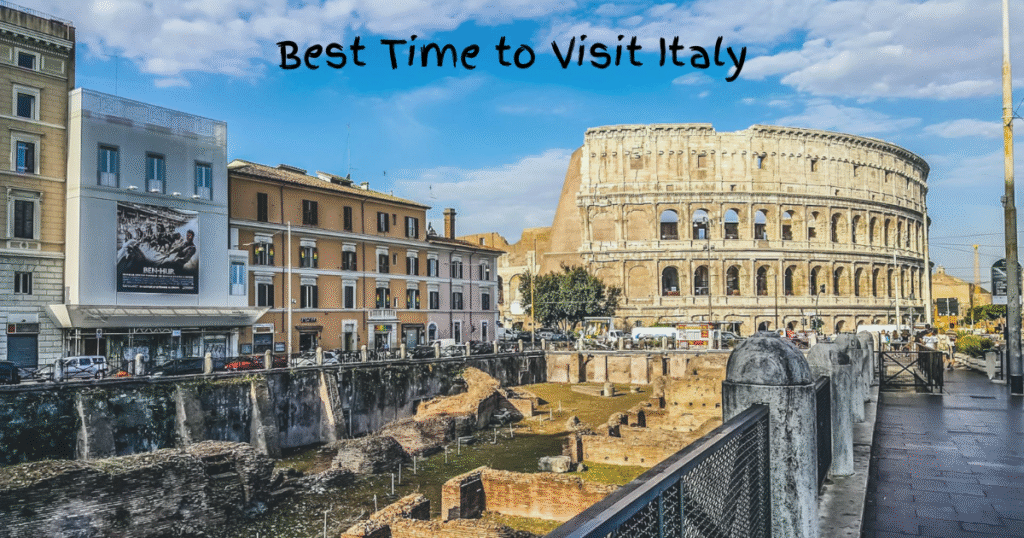Disclosure: This post contains affiliate links. If you purchase through these links, I/We may earn commission at no extra cost to you.
Wondering when the best time to visit Italy is? Discover the ideal seasons for great weather, fewer crowds, and memorable experiences in this comprehensive, first-hand guide.
Italy is a dream destination year-round, but when you go can make a huge difference in your experience. As a seasoned traveler, I’ve learned that timing your trip right means enjoying Italy at its very best – whether you’re a solo adventurer, a couple on a romantic getaway, or a family planning a vacation. Many people ask me, “When is the best time to visit Italy?” The honest answer: it depends on what you want! Each season in Italy offers something unique, from sunny beach days to festive holiday markets. In this guide, I’ll break down the best times (and a few challenging times) to visit, peppered with personal tips, real-world examples, and a sprinkle of humor. By the end, you’ll know exactly the best time to visit Italy for you – and I’ll even share how to snag great deals on flights, hotels, and more along the way. Let’s dive in!
Table of Contents
Italy Travel Seasons at a Glance
To kick things off, here’s a quick overview of Italy’s travel seasons:
- High Season (June – August): Peak summer tourist season. Expect hot weather, bustling crowds, higher prices, and the need to book flights and hotels far in advance. Great for beach lovers and summer festivals, but cities like Rome can feel like a pizza oven (I’ve literally felt like melting gelato on a July afternoon!).
- Shoulder Seasons (Spring & Fall): April – May and September – October are often cited as the best time of year to visit Italy. These months bring a “best of all worlds” balance – mild, pleasant weather, fewer crowds than summer, and sometimes lower prices. You can explore without melting in heat or shivering in cold, and you’ll find shorter lines at popular attractions.
- Low Season (November – March): Late fall and winter see the fewest tourists. You’ll enjoy the lowest prices and lots of elbow room at museums. However, it’s cooler (even cold up north with snow in the Alps) and some attractions or smaller towns operate on limited hours. It’s a trade-off: you won’t contend with crowds, but you might need a warm coat and a flexible itinerary.
In short: The best times to visit Italy overall tend to be late spring and early fall for good weather and manageable crowds. But let’s unpack each season in detail, so you can choose what’s best for your Italian adventure.
A sunny June day at the beach in Monterosso, one of Italy’s Cinque Terre villages. Early summer offers warm weather without the peak-season crowds of July and August.
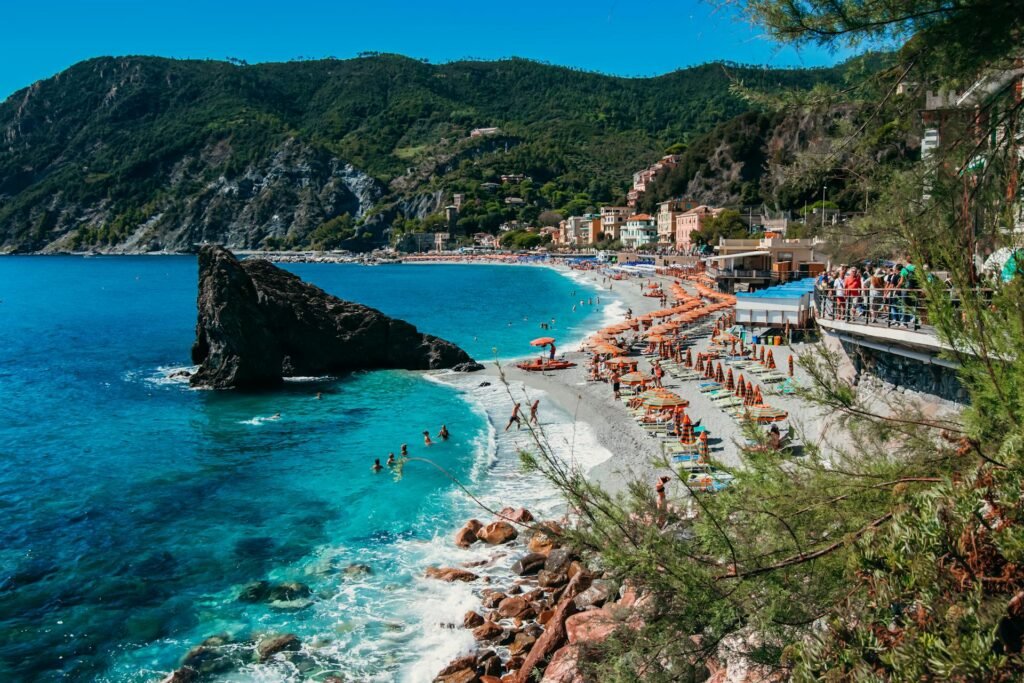
Spring in Italy (March – May)
Spring is a fabulous time to visit Italy. After the chill of winter, the country springs back to life (pun intended!) with blooming flowers and comfortable temperatures. In March, it’s still on the cooler side (50s–60s °F in much of Italy), and you might catch the end of ski season in the Alps or Apennines. By April, parks and countryside are turning green and full of wildflowers – imagine Tuscany’s rolling hills under a bright blue sky, just like a postcard. May often brings downright gorgeous weather: think daytime highs in the 70s °F (low 20s °C) in central Italy, perfect for enjoying gelato in a piazza or taking a Vespa ride through the countryside.
Crowds & Costs: Spring is part of the shoulder season, so tourist crowds start picking up but aren’t at summer levels yet. You’ll find popular spots like Florence or Venice are lively but not jam-packed – a nice sweet spot if you ask me. It’s easier to walk into that cute family trattoria without a long wait, and hotel rates and airfare are generally more moderate than in July. In fact, traveling in spring or fall can save you money, since prices tend to drop when there are fewer tourists. (Hint: I’ve snagged great flight deals in April by using platforms like Aviasales https://aviasales.tpo.mx/qy9sjSWZ or Kiwi to compare airlines .)
Events & Highlights: Easter often falls in spring (March or April, date varies) – a double-edged sword for travelers. On one hand, experiencing Holy Week in Rome or witnessing an Easter procession in Sicily is unforgettable. On the other hand, Easter draws huge crowds of pilgrims and tourists, and prices can spike during Holy Week (not to mention some attractions closing on Easter Sunday). If you plan to visit at Easter, book your accommodations early (I use Expedia to find family-friendly hotels near major sights ) and be ready for crowds in religious sites. After Easter, late April and May are calmer. There are also fun spring festivals – for example, towns in Tuscany host food festivals like artichoke or strawberry festivals. If you’re a wine lover, note that the grape vines won’t be ready for harvest until fall, but springtime offers beautiful vineyard landscapes and fewer tourists in wine regions.
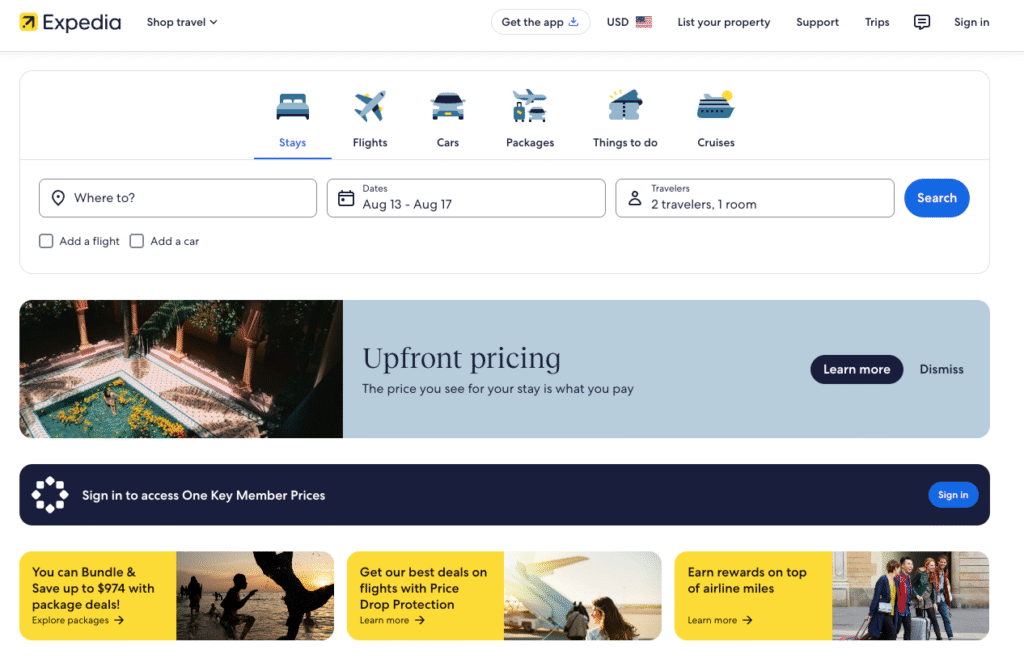
Why I Love It: As a traveler, I find spring to be the best time to visit Italy for a bit of everything. I once visited Rome in late April – the weather was perfect for walking miles through the city (carry a light jacket for cool evenings), the Colosseum had manageable lines, and I didn’t feel overwhelmed by tour groups. In Florence, I scored a last-minute Uffizi Gallery ticket without waiting all day. It feels like Italy is waking up – and you’re welcome to the party.
Travel Tip: Spring can be unpredictable at times. Early spring might surprise you with a rainy day or two. Always pack layers and maybe a small umbrella. But fear not – if rain hits, do what the Italians do: pop into a café, order a cappuccino, and wait it out. Also, keep an eye out for Labor Day (May 1st) – it’s a public holiday, so some sites and shops may close, and popular spots (like Rome or the Amalfi Coast) can get a bit crowded with locals on vacation.
Summer in Italy (June – August)
Welcome to Italy’s high season! Summer is when Italy bustles with energy – and people. If you picture yourself sipping Aperol Spritz on a Capri terrace or sunbathing on the Amalfi Coast, summer is your time. From June through August, expect long, sunny days. Temperatures range from pleasantly warm in early June to scorching in late July and August, especially in the south. For example, cities like Rome and Naples often see heat waves over 100 °F (38 °C) in peak summer, which can be uncomfortable if you’re not used to the heat. In contrast, northern areas (the Italian Alps, Lake Como, even Venice) stay a bit cooler – I’ve worn a light sweater on a July evening by Lake Como while my friends in Rome were roasting.
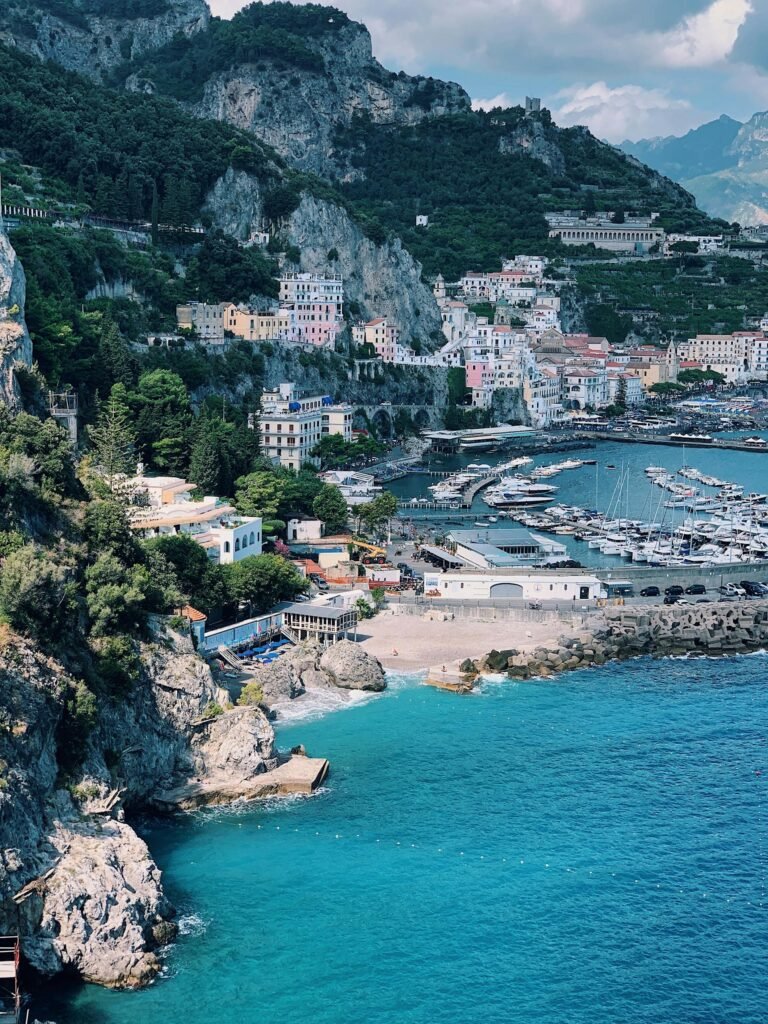
Crowds & Costs: Let’s be honest – summer in Italy is crowded and pricey. This is prime vacation time not just for international tourists but also for Italians. In fact, Italy has become so popular that high tourist season now stretches from May all the way through September. By late June, you’ll notice long lines at major attractions (the Vatican Museums, for instance, or the Uffizi in Florence). Hotels in hotspots can be fully booked months in advance. And yes, you’ll pay premium rates for flights and stays – July airfare to Italy can cost a pretty penny. If you’re traveling with family during school summer break, this might be your only option, but do try to book as early as possible. I personally hop on WayAway or Kiwi in the winter to lock in June/July flights before prices skyrocket. Early planning can also snag you better accommodation options; sites like Hotellook let you reserve well ahead.
Pros: Why go in summer then? Because Italy in summer is vibrant. The days are long (sunset at 9 pm in June means more sightseeing or gelato time!), and every town seems to have some festival or outdoor event. Beaches are in full swing – if you love swimming in the Mediterranean or Adriatic, the water is warm by July. Coastal towns and islands (think Sardinia, Sicily, the Amalfi Coast) are absolutely alive with activity. Also, summer is festival season: outdoor concerts, food fairs, the famous Palio horse race in Siena (July 2 and Aug 16 each year), and countless village fiestas. As a culture lover, I try to catch an open-air opera in Verona’s ancient arena in summer – it’s magical to sit under the stars with opera echoing off 2000-year-old stones.
Cons: The heat and crowds are no joke. Exploring Pompeii at noon in August feels like walking in the sun (carry water and a hat, trust me!). Major tourist spots will be packed; you might shuffle shoulder-to-shoulder through the Vatican halls or have to jostle for the perfect photo in Cinque Terre. Also, August has a unique twist: Ferragosto, the national holiday on August 15. Many Italians take a vacation around that mid-August period. Cities like Milan or Rome might actually feel a bit “empty” of locals (some shops and restaurants close as owners head to the beach), but tourist sites remain busy with foreigners. Paradoxically, beach destinations overflow with Italians on holiday in August. So, if you plan an August trip, be prepared for some local businesses to be closed in big cities and make restaurant reservations in resort areas. Flexibility is key – on one August trip, I found my favorite trattoria in Florence was on hiatus, but I just used it as an excuse to discover a new place!
Travel Tips: If you have to travel in peak summer, here are my survival tips:
- Book Early: Flights, hotels, popular museum tickets – get them locked in as soon as you can. Popular attractions now often offer skip-the-line tickets or timed entries; Tiqets (an online ticket service) is a handy way to book things like Colosseum or Uffizi tickets in advance. It can save you hours of standing in line under the sun.
- Go North or to the Mountains: Consider splitting your trip with some cooler destinations. For example, pair Rome with a breezy escape to the Dolomites or Lake Garda. Italy’s mountains and lakes are gorgeous in summer and far less sweltering. Even just a few days in the Alps (like around Cortina d’Ampezzo) can be a refreshing break – plus, summer hiking there is fantastic and not as crowded as the cities.
- Plan Siestas: Do as the Italians do – sightsee in the early morning, take a long lunch break (or actual siesta indoors) during the hottest 1–4 pm hours, then venture out again in the cooler late afternoon and evening. Italian summer evenings are lovely for strolling (“passeggiata”) when the heat finally lets up.
- Beach Timing: If hitting popular beaches, note that weekends will be extra busy. Umbrella and chair rentals can be expensive in places like Positano or Rimini. For a more relaxed experience, weekdays are slightly calmer, or explore lesser-known coastal spots (I once skipped the crowds by visiting a small beach town in Puglia instead of the packed Amalfi Coast – best decision ever).
In summary, summer can still be the best time to visit Italy if your priority is sunshine and lively atmosphere, and you don’t mind the crowd factor. Just prepare and plan, and you’ll have an amazing time. I have fond memories of dancing with locals at a July festival in a small Tuscan town – something I’d have missed if I’d avoided summer entirely.
Fall in Italy (September – November)
Ah, autumn in Italy – my personal favorite. If I had to pick the best time to visit Italy, I’d say late September or early October wins the crown for me. Fall offers a second shoulder season that’s a lot like spring, with some added perks. In September, the summer rush gradually tapers off. Early September can still feel quite summery (especially in southern Italy or along the coasts – great for a dip in the sea), but by late September, temperatures mellow to very comfortable ranges (70s °F, ~20-25 °C in many areas). October brings crisp air, especially in the north, and beautiful autumn colors in the countryside. It’s still generally mild – think sweater weather in the evenings, T-shirt during midday if sunny. By November, things get much cooler and wetter, particularly in northern and central Italy. November is the rainiest month in many parts of Italy, and the daylight hours get shorter (after the end of October, the clock shifts with daylight savings). However, November travel has its own reward: it’s deep off-season, meaning rock-bottom airfares and hotel rates in many cases, and a genuinely local feel with almost no tourists around.
Crowds & Costs: September and October are classic shoulder season months. You benefit from fewer crowds – a huge plus. I’ve walked into the Vatican Museums on a late September afternoon with a minimal wait, an experience unimaginable in July! Popular destinations are still busy (Italy is never empty these days, let’s be real), but the difference is noticeable. Also, families with kids are back home since school is in session, which means places like the Colosseum or Pompeii have more adults and fewer vacationing teens running around. Prices for flights and accommodations drop from summer highs. Especially from mid-October onward, you can find good deals. If you’re flexible, October might be the best time to snag an affordable Italy trip with decent weather. In fact, aiming for the period between October and April is recommended if you hope to score deals on flights or hotels. I often plan my Italy trips for late September and use WayAway to get cashback on flight bookings , which feels like a double victory: cheaper fare and some money back!
Seasonal Perks: Fall is harvest season, which is fantastic if you’re a foodie (and who isn’t when in Italy?). Wine harvest (la vendemmia) happens in September/October. Regions like Tuscany, Piedmont, and Sicily have grape harvest festivals and wine events. Imagine tasting fresh-pressed olive oil in Umbria or joining a vineyard tour during harvest – these are real possibilities in fall. I once attended a Chianti wine festival in Tuscany in late September; not only was the weather perfect for sitting outdoors with a glass of red, but the festival vibe was joyous and authentically local. Fall is also truffle season (October/November) in places like Piedmont and Tuscany – consider visiting a truffle fair or even going on a truffle hunt if that’s your thing. And let’s not forget the beautiful scenery: rolling hills of Tuscany or vineyards in Veneto turn golden and red. It’s a photographer’s dream.
Things to Note: While early fall is mostly positive, late October and November can be a bit tricky. Some tourist sites or tours in summer-centric areas might reduce hours or availability. For example, ferry schedules to Capri or in Lake Como will be scaled back in the off-season. Many coastal or island hotels and restaurants start closing for winter by late October. And the weather becomes more unpredictable – you could have a glorious sunny day or a dreary rainy one. I remember a trip to Florence in early November: one day I enjoyed a picnic under the Tuscan sun, the next day I was caught in a rainstorm and ended up happily spending the afternoon in the Uffizi gallery (which, silver lining, was nearly empty!). Always pack an umbrella and a mix of clothing layers in fall.
Why You’ll Love It: If you’re like me and appreciate a balance of good weather and not feeling like you’re in a tourist stampede, fall will steal your heart. Walking through Rome’s forum with a light breeze and golden afternoon light, or enjoying a plate of fresh porcini mushrooms in a cozy trattoria – those are the moments that make autumn special. Also, for those into culture, note that many performing arts seasons (opera, theater, symphony) start up in the fall in big cities – a great chance to dress up and enjoy an evening at La Scala in Milan or an opera in Rome.
Venice in late winter (February) during Carnival. Costumed revelers fill St. Mark’s Square for the festivities – a magical off-season experience, though book your stay early if you plan to attend!
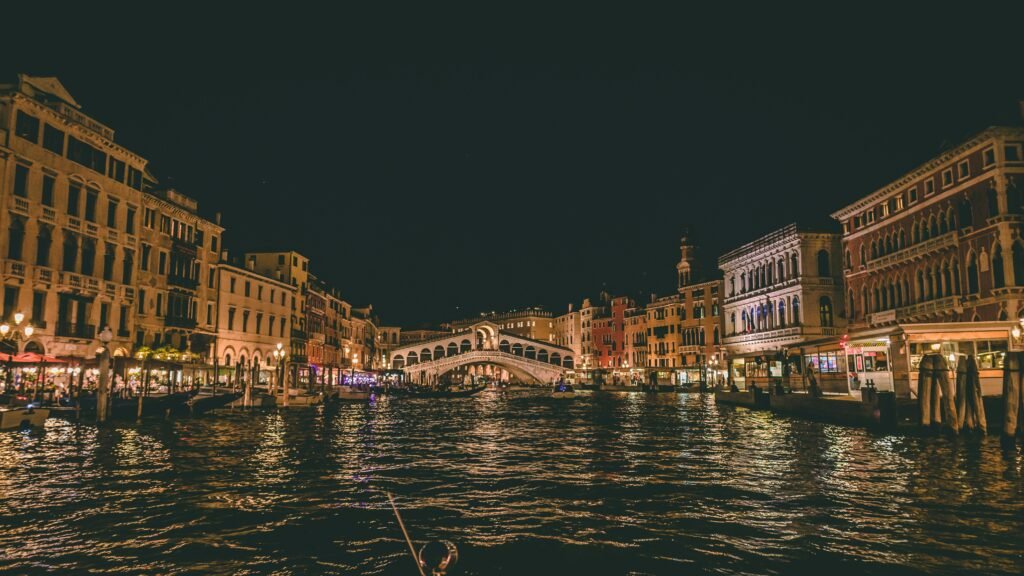
Winter in Italy (December – February)
Winter is the low season for travel in Italy, but don’t write it off – it can be an amazing time to visit, depending on your interests. From December through February, temperatures vary a lot by latitude and elevation. In the north (Milan, Venice, the Alps) it gets legitimately cold – freezing temps, even snow. I’ve worn a puffy coat and gloves touring Milan in January, and I’ve gone skiing in the Dolomites with fantastic snow conditions. Central Italy (Rome, Florence) has chilly mornings and evenings (30s–40s °F, around 0–10 °C), and sometimes mild afternoons. The south (Naples, Sicily) stays milder; it rarely snows on the coasts and can be 50s °F even in winter daytime. You won’t be hitting the beach (the idea of swimming in January draws laughter from Italians, even if you’re from a cold climate and tempted by an empty beach!), but the weather is perfectly fine for city exploration with a warm jacket. And occasionally you get a crisp, sunny winter day that’s just gorgeous for walking around – the air feels fresh and the views (like of snow-capped mountains in the distance) can be stunning.
Crowds & Costs: This is where winter shines. Crowds are at their absolute lowest. Many of Italy’s 60+ million annual tourists come in summer, so when you travel in winter, you’re truly avoiding the masses. You might even have some museums or attractions nearly to yourself on weekdays. I once visited Pompeii in January and there were moments I was alone on a street of ancient ruins – an almost eerie but awesome experience, considering that in July it’s wall-to-wall tour groups. Prices are also at their lowest in winter. Airlines often have sales for winter dates, and hotels slash rates outside of major holidays. Your travel budget can stretch a lot further. If you’re eyeing that 5-star hotel in Venice that’s out of reach in June, check the rates for January – you might be pleasantly surprised. Plus, traveling in the off-season can help reduce strain on over-touristed spots (and that’s something I feel good about, as an responsible traveler).
Festivities & Attractions: Winter might be low tourist season, but it includes some high festive seasons. December brings Christmas markets and holiday decor. Italian cities and towns put up lovely lights; places like Bolzano or Florence have charming Christmas markets where you can sip mulled wine and shop for crafts. Visiting Italy during Christmas-New Year’s can actually be busy in certain spots (like Rome for the Vatican’s Midnight Mass, or ski resorts fully booked with holiday skiers). So if you want a super quiet trip, aim for mid-January or early February when things truly calm down after the holidays. New Year’s Eve in big cities is lively (fireworks, outdoor concerts), but around Jan 6 (Epiphany/La Befana holiday) the holiday season wraps up.
One of winter’s coolest highlights is Carnevale (Carnival) in late February (or early March some years, depending on the liturgical calendar). Venice’s Carnival is world-famous, with elaborate masks and costumes filling the streets. It’s an incredible experience – I went to Venice during Carnival and felt like I stepped into a masquerade ball from the 18th century (I even splurged on a costume for a night!). But note: Carnival brings its own crowds and high prices in Venice, so book hotels and trains early if you plan to go. Other cities like Viareggio or Ivrea (famous for its “Battle of the Oranges”) have big Carnival celebrations too. Outside of festival times, winter is peaceful. Museums and attractions remain open (with shorter hours – it gets dark by 5 pm in deep winter). Some smaller touristy businesses (like beach rental shops, certain tours in coastal areas) might shut down until spring. But major sights in Rome, Florence, etc., are open year-round. Always double-check opening times for the off-season, and have a few indoor activities in mind in case of bad weather (a cooking class or a thermal spa day can be perfect winter activities).
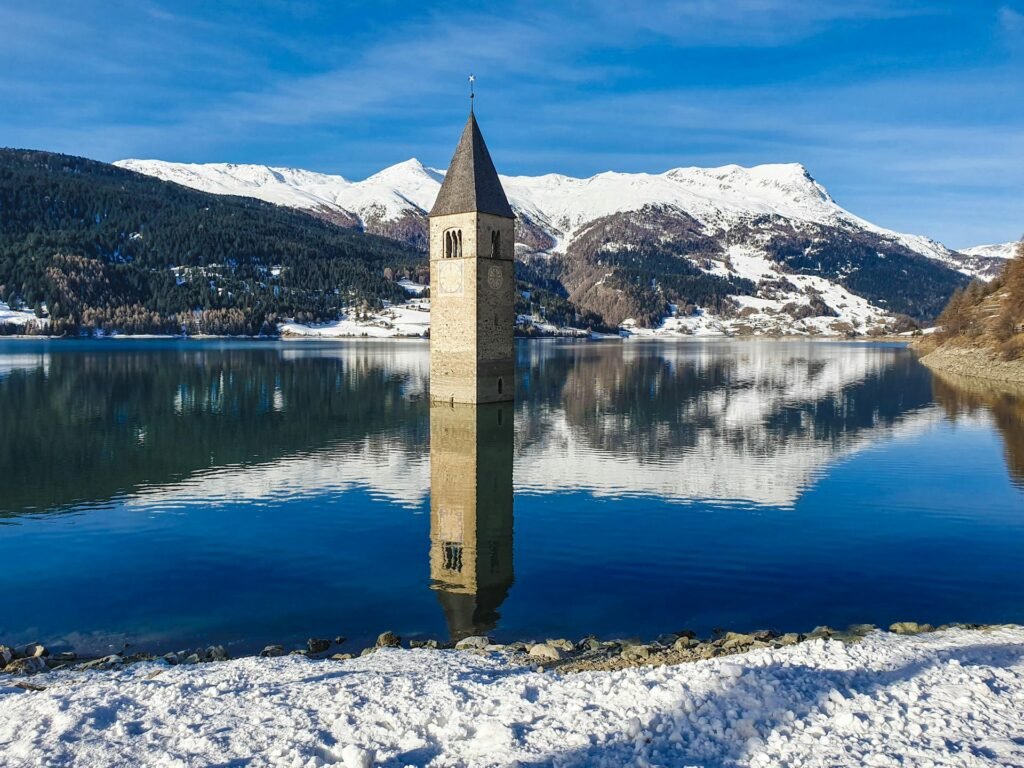
Ski and Snow: For the winter sports enthusiasts, Italy offers fantastic skiing and snowboarding. The Dolomites and Alps have resorts that rival those in Switzerland or France, often at cheaper prices. Towns like Cortina d’Ampezzo, Courmayeur, and Val Gardena are winter wonderlands from December through March. If hitting the slopes by day and enjoying Italian cuisine by a fireplace at night sounds like heaven, consider a ski detour in your Italy winter trip. (Just remember, this will be the high season in those ski areas – so you may need advance bookings there, even though it’s low season elsewhere.)
Travel Tips: Visiting in winter means packing warm clothes – coat, boots, scarves, the whole bundle if you’re going north. In the south, you might get away with a lighter jacket, but don’t underestimate the chill, especially in places that are humid (Venice cold feels damp). One thing I love about winter: you can be more spontaneous. I’ve taken last-minute weekend trips in February to cities like Bologna or Perugia, finding great last-minute hotel deals because so few tourists are competing. It’s a wonderful feeling to wander an uncrowded Florence in the morning, with mist rising off the Arno River. And if you’re an art lover, museum hopping in winter is perfect – no lines, and you can linger in front of Botticelli’s Venus as long as you want.
Planning Your Trip: Picking Your Best Time and Getting Deals
By now, you’ve probably identified a season that suits your travel style. Before we wrap up, here are some final planning tips to help you make the most of your chosen time in Italy:
- Align with Your Interests: Think about what you most want out of your trip. Love beaches and swimming? Then summer or early September is your window. Dreaming of visiting museums and historical sites without a crowd? Go in winter or the edges of shoulder season. Want to attend special events (like Carnival, Easter at the Vatican, or the olive harvest in Tuscany)? Plan specifically around those dates – just be prepared for a spike in local activity (and bookings).
- Flights: Use flight comparison tools to your advantage. I often check both Expedia and flight-specific search engines like Aviasales for a broad view of options [Affiliate Links]. If you’re scheduling travel in high season, book flights 3-6 months out if possible. For low season deals, you might find great prices even 4-8 weeks ahead. And don’t forget, flying mid-week (Tuesday or Wednesday) can sometimes be cheaper than weekends.
- Multi-Destination Trips: If you plan to combine Italy with another country (hey, Greece is a common combo!), look into multi-city flight tickets or passes. Kiwi.com is a tool I’ve used for creative route planning – it can piece together flights and even trains to make a multi-stop trip easier [Affiliate Link]. For example, you could fly into Rome, explore Italy, then hop over to Athens from Venice. Just ensure you allot the right seasons for each (spring/fall works well for both Italy and Greece – more on that in the FAQ!).
- Accommodation: Summer = book early. I can’t stress this enough for July/August, especially in tourist hotspots or coastal areas. Hotelbook or Expedia let you filter for free cancellation rates, which is a lifesaver if you’re reserving far in advance – you lock in a place but can adjust later if plans change. In shoulder or low seasons, you have more wiggle room and can sometimes book on the fly. I’ve driven through Tuscany in October without a fixed plan, knowing I could find an agriturismo farmhouse B&B easily each night. That flexibility is one of the joys of off-peak travel.
- Tours & Tickets: Some experiences in Italy are much better with a reservation or ticket in hand. In peak times, absolutely reserve things like the Last Supper in Milan, the Uffizi Gallery in Florence, or a Vatican guided tour. In low season, you could walk up, but why risk missing out if it’s a high priority? Booking online in advance is usually the way to go. Also, consider local guided tours – small group walking tours or food tours are available year-round and can enrich your visit (a pasta-making class in a cozy kitchen is fantastic on a chilly winter day in Bologna!).
- Stay Flexible and Enjoy: Finally, remember that no matter when you visit Italy, things might not go 100% to plan – and that’s okay. Weather can surprise us, a strike can delay a train, or a museum might be unexpectedly closed. Italy has taught me to slow down and go with the flow. If a rainy day hits, that might become your memorable café day or spa day. If a heat wave saps your energy, take a long lunch in the shade and indulge in a siesta like locals do. Each season has its quirks, but that’s part of the adventure.
One more thing: Italy is popular – it ranked as the fifth-most visited country in the world, attracting tens of millions of visitors each year. Overtourism is a real concern in places like Venice or Cinque Terre. By choosing shoulder or off-season, or exploring lesser-known regions, you’re not only likely to have a richer experience, but you’re also helping spread the tourism load more sustainably. So bravo to you for thinking carefully about when to visit, not just what to see!
Alright, I’m stepping off my soapbox now. Let’s move to a quick FAQ to answer some specific questions you might still have.
FAQ: Your Italy Timing Questions Answered
Q: When is the best time to go to Italy?
A: The consensus among many travelers (and travel experts) is that late spring (May/June) or early fall (September/October) is the best time to visit Italy. During these shoulder months, you’ll enjoy pleasant weather without the peak-season crowds or costs. I personally love May and September – in May, everything is blooming and not too hot, and in September, the summer heat is easing but the sea is still warm enough for a swim. That said, the truly best time also depends on your priorities. If you hate crowds, winter might actually be your best time. If you love the beach, you’ll want summer. So use the guide above to match the timing with your interests.
Q: What is the cheapest month to visit Italy?
A: Generally, the winter months (November through February) will be the cheapest time to travel in Italy, excluding the holiday period around late December. Within that window, January might be the cheapest month of all. After New Year’s, there’s a lull in tourism, so airlines often have lower fares and hotels drop prices. I’ve seen airfare to Italy in January/February that’s hundreds of dollars less than the exact same routes in June. November (excluding Thanksgiving if Americans are traveling) and early December can also be budget-friendly, though remember early December might still have some lingering higher prices until after the Immaculate Conception holiday (Dec 8) – a minor bump when Italians sometimes travel. To save money, aim for the quieter period between October and April when tourist numbers dip and so do airfares. And keep an eye out for flight sales in late summer or fall for winter travel; signing up for fare alerts can help. Finally, consider flying into a less obvious city – sometimes flying into Milan or Rome (whichever is less in demand at the moment) can be cheaper and you can take a cheap local flight or train within Italy.
Q: Is it too hot to visit Italy in the summer?
A: It can be, yes – especially in July and August. Italy’s summers have been getting hotter in recent years. In the north, summer heat is more moderate and often comfortable (70s–80s °F in cities like Venice or in the mountains), but in the central and southern regions, July/August can bring 90–100 °F days (32–38 °C). Cities like Rome, Florence, and anywhere in the southern half (Naples, Sicily, Puglia) can feel very hot and humid. If you’re sensitive to heat or not used to high temperatures, midday sightseeing in August will be draining. That said, if summer is your available travel time, you can mitigate the heat: focus on coastal or high-altitude destinations where it’s cooler, schedule outdoor activities for mornings or evenings, and embrace the Italian way of slowing down in the afternoon. Also, many accommodations have air conditioning, but not all – make sure to check if A/C is a must for you. And hydrate, hydrate, hydrate – carry a water bottle (Italy has many free public water fountains to refill, especially in cities like Rome). So, while summer is hot, with the right approach it’s still doable. Just expect to move at a slower pace on the hottest days (and eat lots of gelato – for cooling purposes, of course!).
Q: What is the best time to visit Italy and Greece in one trip?
A: Italy and Greece have somewhat similar climates and peak seasons, so the good news is the timing that works well for Italy often works for Greece too. The best time to visit Italy and Greece together would be late spring (April–June) or early fall (September–October). In late spring, both countries offer mild warm weather (great for sightseeing; Greek islands are not too hot yet and Italy’s countryside is gorgeous). By early fall, the intense summer heat in both Italy and Greece has eased, crowds are thinning, and you can comfortably hit the beach in Greece and then tour ancient ruins in Italy without overheating. I’d avoid deep summer for a combo trip if possible, because you’d be dealing with peak-season crowds in two countries and very high temperatures especially in Greece’s islands and southern Italy. One approach some travelers take is to go in late September into early October – start with Italy’s northern cities (cooler earlier), then head to Greece a bit later where it’s warmer later into the fall. Logistically, there are direct flights between Italy and Greece (Rome or Milan to Athens, for example), and even ferries between southern Italy and western Greece if you’re feeling adventurous. Just keep in mind that by late October, some Greek island tourist businesses start closing for the season, while Italy will be moving towards off-season too. So for the best of both, aim for that sweet spot around May or September. Pack layers (northern Italy can be cooler, Greek isles still warm) and enjoy a fabulous two-country vacation!
Q: Are there any times I should absolutely avoid visiting Italy?
A: “Avoid” is a strong word – Italy is enjoyable year-round if you know what to expect. However, there are a few periods that can be challenging:
- Mid-August: As mentioned, around Ferragosto (Aug 15), Italians are on holiday. Tourist areas are crowded, and some cities see many local shops closed. Unless you specifically want the busy beach scene or a summer party atmosphere, mid-to-late August can be frustrating for a traveler looking for an authentic local experience (because the locals themselves might be out of town!).
- Major Holidays for Specific Activities: If you have a specific goal like seeing a particular museum or doing a specific hike, avoid times when those might be inaccessible. For example, visiting the Vatican around Easter – incredibly special but incredibly crowded and expensive. If you’re not there for Easter, you might want to steer clear of Holy Week in Rome due to crowd levels. Similarly, Venice during Carnival (Feb) or Verona during its huge VinItaly wine fair (April) means everything is jam-packed. Tuscany during the fall grape harvest is wonderful, but some wineries might be busy with harvest activities and less focused on tours. Do a quick check if there’s a major event in your city of choice that might either greatly enhance or complicate your visit.
- Deep Winter in Small Towns: If your dream is to hike the coastal trails of Cinque Terre or drive through small villages in Tuscany, January isn’t ideal – not because it’s impossible, but because some hotels and restaurants will be closed, and weather might not cooperate for outdoor activities. Coastal hikes can be muddy or occasionally closed for safety in winter. So, I’d “avoid” deep winter for trips that are heavily nature/outdoors focused in those areas. (Cities, however, are fine in winter – they have enough indoor attractions and year-round infrastructure.)
In general, there’s no time that’s completely off-limits, but being aware of these nuances will help you plan better. Whenever you go, Italy has a way of charming you – be it through sunshine or rain, summer bustle or winter calm. Buon viaggio and enjoy every moment!


